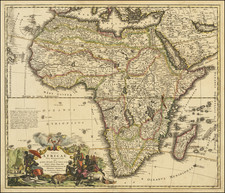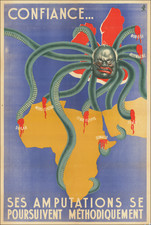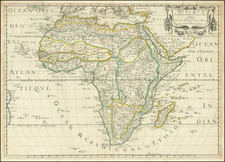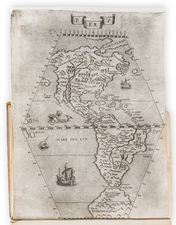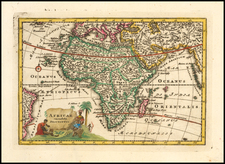Maximum Sultanate of Zanzibar
Finely executed large map of Africa, illustrating the apex of the Sultanate of Zanzibar's lands in East and South Africa.
The map does a credible job of identifying the colonial interests of the various European nations, with the colors coded as follows:
- English (red)
- French (blue)
- Spanish (yellow)
- Portuguese (salmon)
The "possessions" of the Sultanate of Zanzibar are also noted in purple. Lasting from 1856 to 1964, the Sultanate of Zanzibar was then ruled by Sayyid Sir Barghash bin Said Al-Busaid.
Until 1884, Zanzibar controlled most of the Swahili Coast and the trading routes to the interior regions, as far as Kindu on the Congo River. In 1884, the Society for German Colonization pursuaded the chiefs of the Sultanate on the mainland to agree to German protection, prompting and objection fromn Sultan Bargash bin Said. Following the Berlin Conference and as a part of the scramble for Africa, German interests were extended by the arrival of the German East Africa Company in 1885, which had a mission to colonize the area.
In 1886, the British and Germans secretly met and discussed their aims of expansion in the African Great Lakes, with spheres of influence already agreed upon the year before, with the British to take what would become the East Africa Protectorate (now Kenya) and the Germans to take present-day Tanzania. Within several years, Zanzibar's control was significantly reduced.
In 1888, the Imperial British East India Company took administrative control of Mombasa and the German East Africa Company took control ruover the coastal area previously submitted to German protection. Locals undetook the Abushiri revolt, which was suppressed by the Kaiserliche Marine, effectively ending the end of Zanzibar's control of the mainland.











